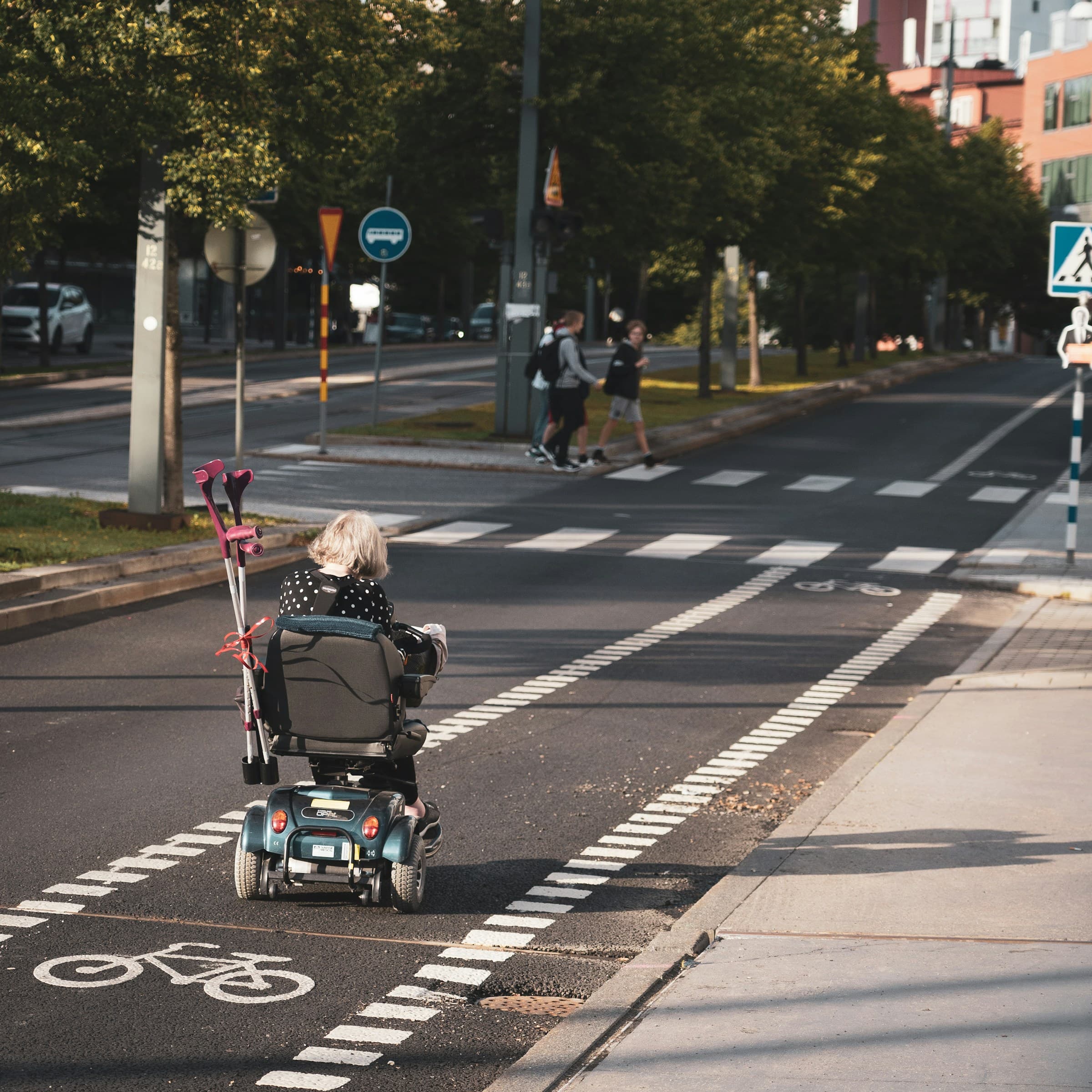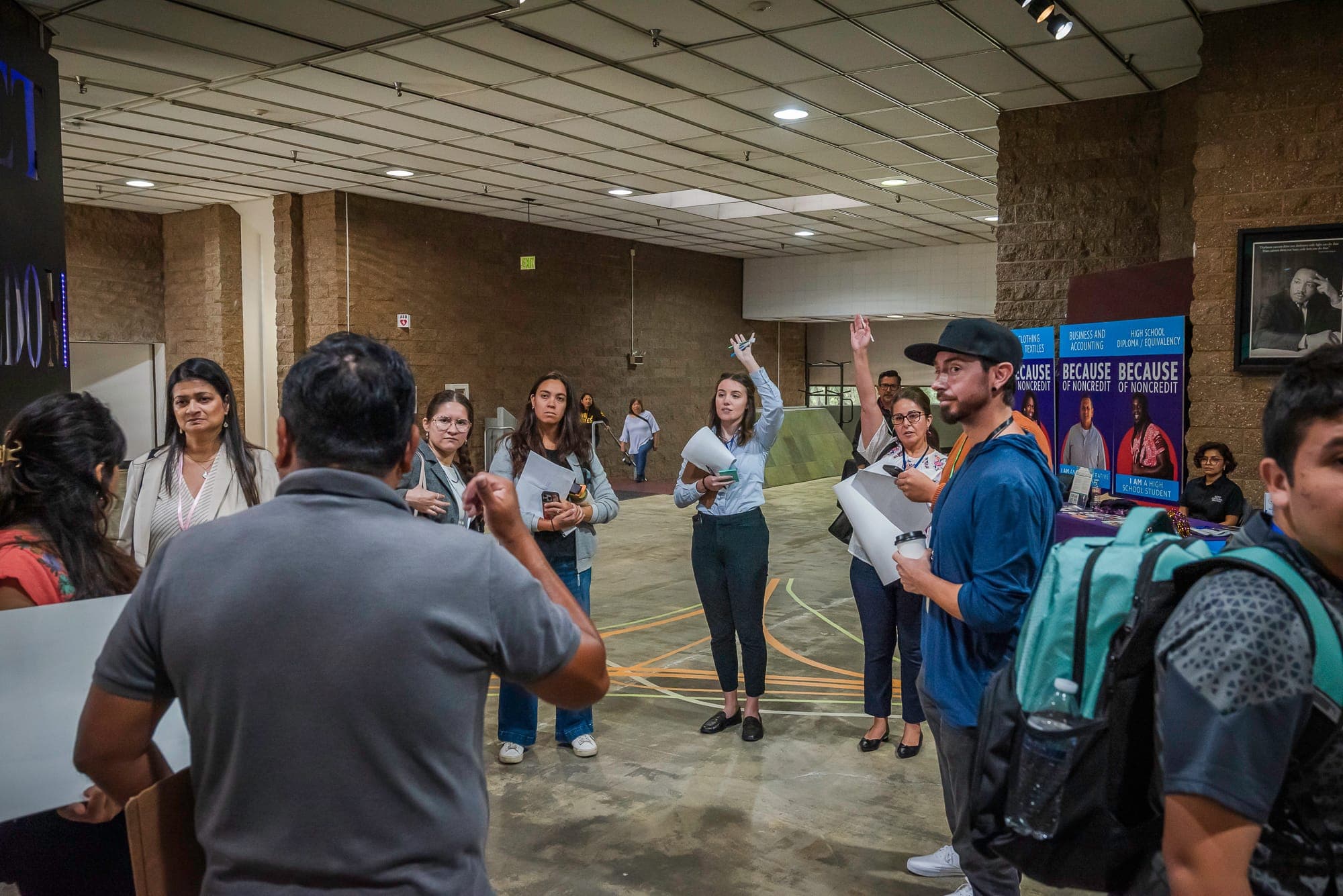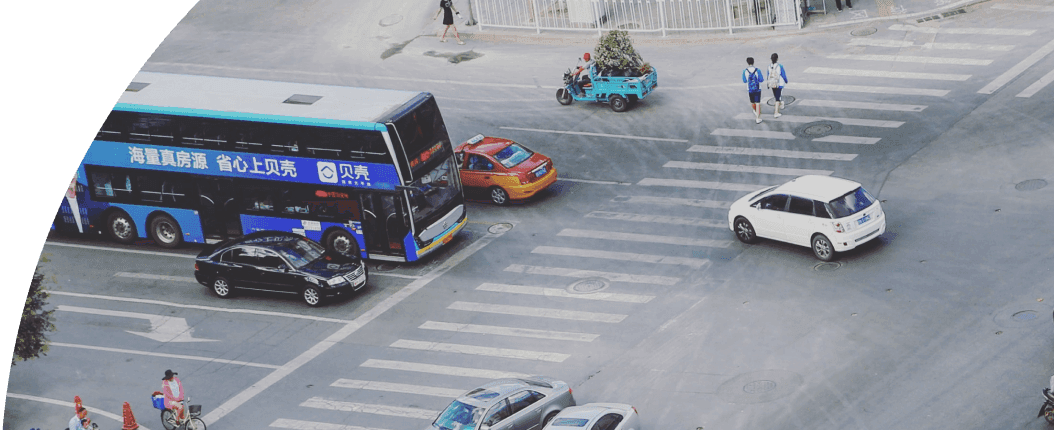
News
By London Weier, July 17, 2025
The Complete Streets approach prioritizes infrastructure that serves all users, and a strong Complete Streets policy specifies that vulnerable community members, including people with disabilities, are equitably considered throughout planning, design, and implementation.
Regardless of how people move through or process the world around them, they should be able to do so with few or no barriers. This is the meaning of accessibility. There are a wide range of mobility, visual, and cognitive disabilities that impact individuals in different ways and in varying degrees. For example, a disability can be permanent or temporary, visible or invisible, mild or severe.
One way to ensure streets are accessible is by providing clear language in Complete Streets policies about including and considering people with disabilities throughout the planning, design, and implementation phases of transportation projects. Overall, a majority of this year’s Complete Streets policies mention accessibility and/or persons with disabilities in some way. However, it is not enough to simply mention them; A strong policy must ensure that inclusion is mandatory and that there is no room for neglect or loopholes. This year’s batch of policies could have been strengthened by not only prioritizing these road users, but including more specifics on which organizations should be consulted on projects, how the disability community will be engaged, the performance measures that will track progress, and which specific design guidelines are required when designing projects.
There are some key policy components that foster improved accessibility. The following elements are taken directly from our Complete Streets Policy Framework and exemplify different ways accessibility can be integrated in a policy.
- Element #1: Establishes commitment and vision
- People with disabilities should be explicitly identified as a priority group.
- Element #2: Prioritizes underinvested and underserved communities
- Criteria related to disability (such as proportion of residents with disabilities) can be used in project selection.
- Element #6: Adopts excellent design guidance
- Adopt Public Rights-of-Way Accessibility Guidelines (PROWAG) and other accessibility-focused materials to inform design choices.
- Element #9: Sets criteria for choosing projects
- Incentivize projects that improve accessibility.
In the policies reviewed for this report, there were several good examples of how ensuring accessibility and Complete Streets go hand in hand. Noting that disability is an important area to focus on is a great place to start when strengthening a Complete Streets policy. Clyde, Ohio, for example, noted “people with limited mobility and physical challenges” as a group that should be prioritized.
When creating a policy, it’s important to coordinate with relevant advocates and community members to make accessibility a priority at every step of the Complete Streets process. In San Antonio, the city’s Complete Streets Coalition is made up of a number of organizations, including disABILITYsa, which participated in the policy drafting. The policy itself ensures consistent collaboration through a Disability Access Office representative on their Complete Streets task force and project prioritization which specifically includes strategies that resolve barriers to engagement associated with disability.
There are many ways that accessibility can be integrated into a Complete Streets policy, with the above examples only scratching the surface. Disability is not a monolith, so accessibility should not be one either. In all cases, though, engagement with the disability community and advocates is crucial when drafting and implementing a Complete Streets policy.
Related News

© 2025 Smart Growth America. All rights reserved
Site By3Lane Marketing










